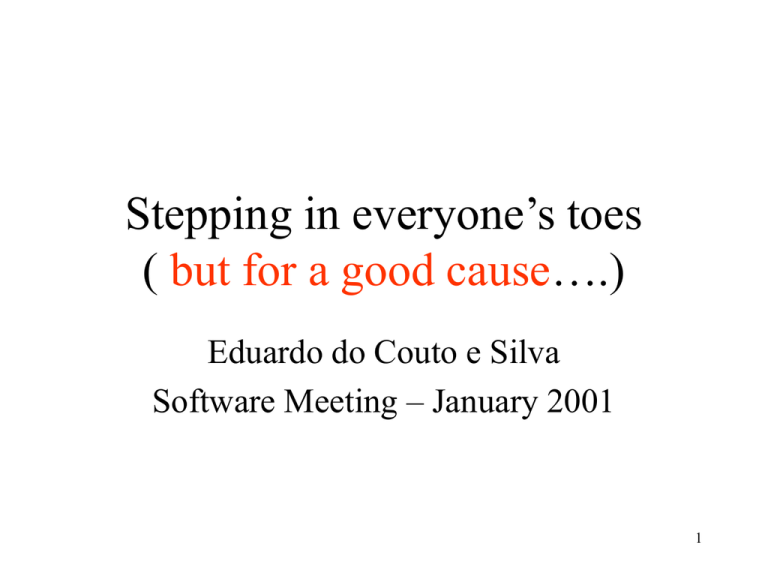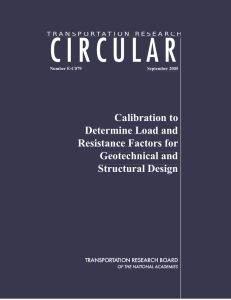Stepping in everyone’s toes ….) ( but for a good cause
advertisement

Stepping in everyone’s toes ( but for a good cause….) Eduardo do Couto e Silva Software Meeting – January 2001 1 LAT Performance/Calibration • Ensure faultless operation of integrated hardware on GROUND prior to launch • Test and verify hardware (including environmental testing) • Provide support to validate tools and strategy developed for LAT on-orbit and offline calibration, monitoring and debugging • Characterize the performance of the LAT via Instrument Response Functions and validate background estimations from Monte Carlo simulations. • Develop in-house expertise (as much as possible) for backup needed in case subsystem’s schedules are compromised by unforeseen situations 2 Integration Science Database Calibration Monte Carlo On line/ off line reconstruction Towers Beam Tests Cosmic Ray Tests Integrated Hardware/Software Subsystems Hardware/Software Database (s) ? 3 Ground testing is part of the overall calibration plan (Let’s raise some issues…) • What will be provided by subsytems (hardware/software) ? • What is needed to ensure that upon delivery all subdetectors are working and how this info will be stored and used as a reference ? • What will be needed at the tower(s) level from BTEM, BFEM, future tests beams and calibrations with cosmic rays ? • How do we interface with on-line,offline reconstruction and Monte Carlo developments ? • How to combine, maintain and update the information from different institutions and SLAC (database) ? • What will be the our input to the data science software ? 4 Performance & Database • The construction database will be continuously developed by the subsystems locally at their institutions and data will certainly be available on the web. • How does one transfer only the relevant data needed for integration while keeping the possibility of searching and querying construction information in case problems appear ? • Shall we have a central database ? If so, can we maintain it ? 5 An example… Detector Construction (subsystem level) Integration Dead channels Leakage current FILTER Local coordinates of strips Sensors Ladders Kapton Converter Cables MCM GTRC GTFE Trays … Both sides must be able to search and query all information Database 6 Database – What are we looking for ? (let’s plan for it) • Shall handle needs for integration (future beam tests and cosmic ray tests). • Shall interface with subsystems production database • What will be the inputs to the in-flight calibration software? • What will be the inputs to the off-line calibration software? • What will be the inputs to the Science database 7 Instrument Response Functions ( on GROUND) 1. Monitor electrical properties of detectors and determine effects from temperature, vibrations and vacuum environment 2. Mechanical survey to obtain local spatial coordinates of sensitive elements and determine effects from temperature, vibrations and vacuum environment 3. Characterize performance as a function of angles (how many ?) , energy (now many bins and how wide ?) and front/back sections of tracker (efficiencies?). What do the likelihood analyses need ? 4. Detailed program for study of background rejection with data and Monte Carlo simulation 8 Immediate Tasks 1. 2. 3. 4. 5. Define the group of people involved in integration and their roles (on the works by the GLAST management). Define and build an integration database at SLAC with input from all subsystems (SCS is already ready to help–need green light). Define tentative Instrument Response Functions (groundwork has been done by evaluation of science capabilities and by the integration engineers). Define role of BTEM and BFEM data for integration to evaluate efforts needed for the software development (some groundwork done by the BTEM/BFEM groups). Define minimum requirements for reconstruction and Monte Carlo simulations and prepare a working version with the GAUDI framework and GEANT4 (on the works by the software group). 9






